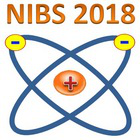Speaker
Mauro Recchia
(Consorzio RFX)
Description
SPIDER is the prototype of the ion source of the ITER Neutral Beam Injector presently in operation at the Neutral Beam Test Facility in Padova, Italy, designed to deliver an ion current density of 355A/m2 in H- (285 A/m2 in D-) and to accelerate the beam of extracted particles up to 100 keV energy. SPIDER is equipped with a plasma source composed of 8 Radio Frequency (RF) drivers each transferring 100 kW power at the frequency of 1 MHz to the plasma via magnetic inductive coupling. The driver coil is separated from the plasma by a dielectric driver case; it works at an estimated pressure of about 0.06 Pa (in Hydrogen operation and with source pressure of 0.3 Pa) and it reaches a voltage of 12 kV rms at full power. A set of 4 dielectric supports called combs, placed around the driver case, assures the separation in between coil turns. Both the combs and the driver case contribute to the mechanical support of the coil.
The present design of the SPIDER plasma source is the one implemented during the procurement of the source and follows the concepts previously developed and proved at IPP Garching. However, further studies have proceeded in parallel to the SPIDER construction, both at theoretical and experimental level, due to its more stringent requirements. One important topic analyzed has been the power handling capability of the driver; in fact, the performance in terms of ion current of the beam source increases with the radiofrequency power level, which however raises issues related to the voltage hold off of the driver components. The risk of possible breakdowns at the driver coils with the power increase, already experienced on other devices, has been identified for SPIDER too; the paper reports the present status of the electrical analyses of the SPIDER driver coil region.
Primary authors
Alberto Maistrello
(Consorzio RFX)
Diego Marcuzzi
(Consorzio RFX)
Elena Gaio
(Consorzio RFX)
Marco Bigi
(Consorzio RFX)
Mauro Recchia
(Consorzio RFX)

